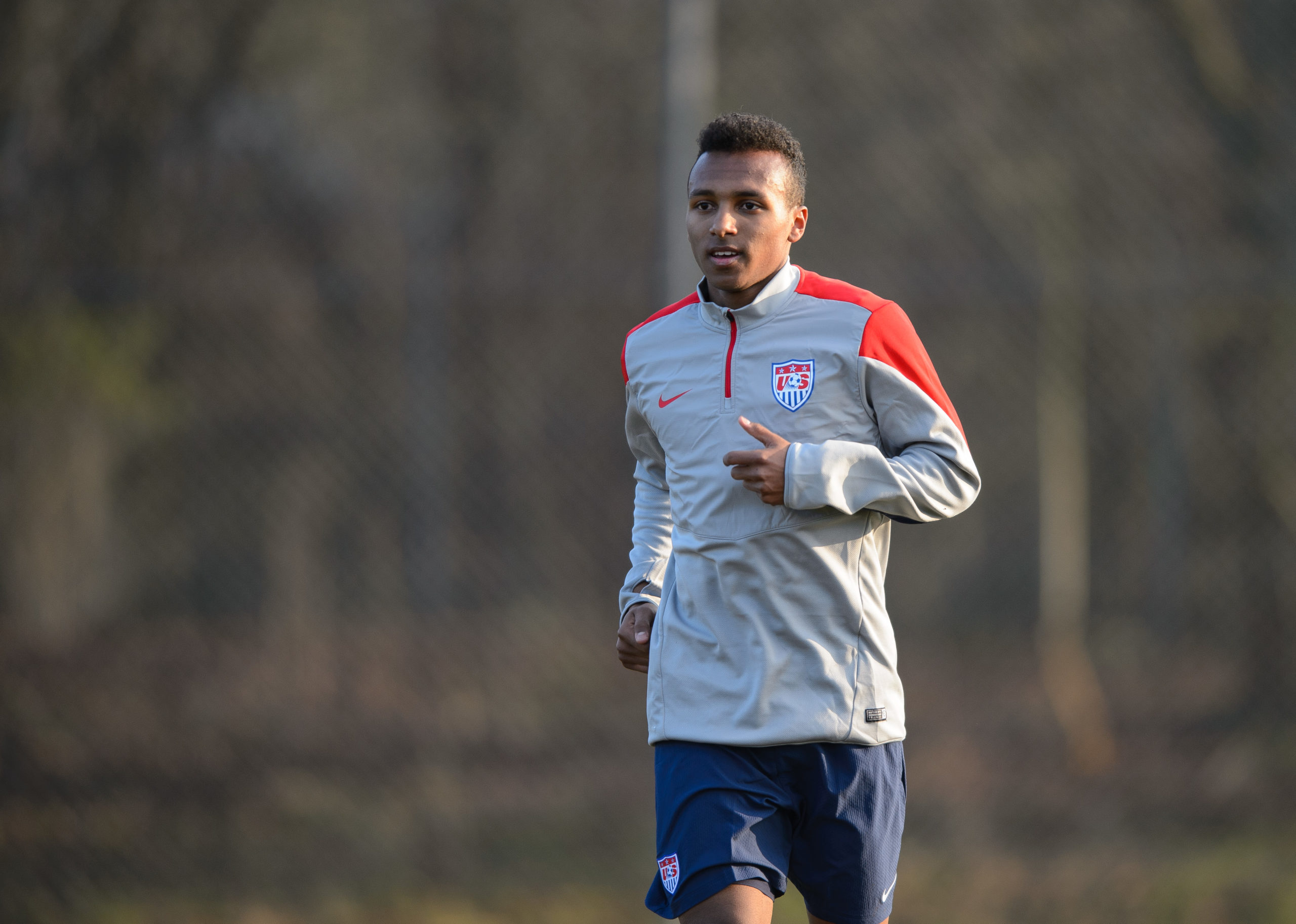Five ways to develop more creative players needed for future U.S. Men’s National Team success

By John Dingle,
Prior to 1990, the U.S. Men’s National Team had failed for 40 years to qualify for a World Cup. We have qualified for every World Cup since and no one expects this to change in the future. American players are currently playing all over the world and have been accepted by major clubs in Europe and Mexico. Opponents of the national team now respect our US Men’s team. They realize, they can’t expect to win against the USA without bringing their ‘A’ game. We are now expected to get out of our group at every world cup and have reached the quarterfinals in 2002. Our style of play is now closer to top soccer countries’ style. We now play out of the back on a regular basis. Goalkeepers pass the ball after saves and on goal kicks. We now attempt to play through defensive lines as opposed to skipping them or player over the lines as our preferred method of attack. When we get the ball wide, our players no longer automatically cross the ball. Our wide players make tactical decisions to make an early cross, end line cross, dribble the end line, or recycle the ball by playing it back so it can be played into the middle.
The US men’s National team’s progress can’t be overstated; however, it will not reach elite status on the world stage until we start developing, identifying, and using creative players.
Creative players have the ability to think and execute the unexpected. Their unpredictable play can unbalance the most organized defense. Creativity can come through passing, first touch, shooting and of course, dribbling. The creative player puts the opponent on guard. The opponents know, they have to expect the unexpected. Creative players have the ability to change the game. One of the methods of scoring while in the buildup and when playing against a team that gets ten players behind the ball, is through creativity. The creative player can break down the organization.
The U.S. has failed to develop these types of players for the following reasons:
- We have outsourced the development of creative players to those who teach dribbling moves.
- Coaches use restrictions and conditions that restrict and condition players to play like each other.
- Our culture of treating all players the same. (equally)
- The culture of winning.
- The attitude of team work is more valuable than individual efforts.
Problem One: Creativity does not come from copying
Millions of players have gone through soccer camps, player development programs, and club curriculum that stress the learning and mastery of dribbling moves in an effort to develop creativity. Thousands upon thousands of videos and DVDs have been watched, espousing the virtues of teaching players dribbling moves, while giving the viewer step by step directions on how to teach each dribbling move. If this was a scientific experiment, we would look at the outcome. How many creative players has the US Men’s team had? Clint Dempsey is close, but as his time in England showed, he is not creative at the highest level. In England, he was placed in the role of a worker who shared the ball. This leaves the answer to the above question at zero. We have failed to produce any creative players on the US Men’s national team.
Solution One: Leading players to self-discovery
We can lead players to self-discovery. When players discover their own method and attitude of dribbling, the discovered style will fit their body type and personality. Creative players will develop their own method of being spontaneous. Coaches will also see the use of self-discovery will allow creative player types to bring this same attitude toward passing, first touch, and finishing.
Before leading players to self-discovery we must make each player comfortable with four parts of dribbling. Three of these parts are ways to dribble the ball. Players can push the ball, roll or drag the ball, and they can chop the ball. The final item players must be comfortable with is changing their mind (faking) how they are going to manipulate (dribble) the ball for themselves. By requiring players to change their mind during the execution of a touch, they are learning what their body is capable of executing. Once players are comfortable pushing the ball with all surfaces of their foot, rolling the ball, chopping the ball and making ball fakes, we can begin to have the players discover combinations for themselves. Ask the players to use combinations to form a pattern. Ask the players to use combinations that are opposite of each other. Ask players to dribble the ball from cone to cone in as many different ways as they can discover.
Players experiencing this self-discovery approach will learn some of the same dribbling moves shown on the aforementioned DVDs. But when players discover ways of moving the ball themselves, they assume ownership of the movement. It becomes part of the player; they practice it on their own and use it to problem solve.
Problem Two: Each player is different, but we treat them all the same!
All parents who have multiple children will tell you their children are all unique. They treat each child differently to get through to each, to challenge each, and to allow each’s personality to develop to its full potential. Coaches have players that they know are different, but treat each child the same.
Solution Two: Coach the individual
Some players work harder than others; some share the ball more while others like to be physical. Some like to dash into open space, while others read the game and know where to be. Very few players think differently and look to solve problems through improvisation (game changers). Learn about your players and find ways to challenge each to be the best using their soccer personality. Challenge the game changer, but don’t force them to conform.
Problem Three: Restrict Players! Condition Players!
Old school coaching emphasizes limited touches, passing and moving, and playing quickly. Coaches use two and one touch restrictions to get players to play faster, read the game quicker, and problem solve at game speed. The problem with this is they are restricting the players to only be able to solve the problem with a pass. Restricting the improviser does not allow them to improvise.
Conditions are used to develop tactical parts of the game. A typical old school condition is to only allow a goal to be scored off a cross when attempting to develop wide play. This forces the ‘game changer’ to share the ball when they have the ability to solve the defense in divergent ways. Divergent thinking is an essential capacity for creativity. We cannot continue to restrict creative personalities in how they play and condition them to the way they must play.
Solution Three: Set creative players free from restrictions and conditions
The purpose of restrictions and conditions is to modify play so that once they are removed the players continue to play in this manner out of habit. How can we encourage players to improvise, take chances, and think divergently in one practice and then attempt to modify their play the next practice?
Use restrictions on individual players that fit and challenge their personality and body type. The player who shares the ball out of habit can have a one or two touch restriction to challenge them. The creative player can have the condition of solving the same problem differently each time to develop their ability to think divergently.
When it comes to conditions, coaches need to modify their activity to allow the players to solve the problem as an alternative to conditioning the solution into the activity. Below we look at the condition of goals must come off a crossed ball.
Question. Does the condition enhance or restrict the principles of play?
Answer. Restrict- Why go wide if the middle is open. Penetrate
Q. Why are you using the condition
A. Most likely, your team does not solve the problem of the middle being closed through the use of width.
Q. How can you challenge the players to solve this problem without using a condition?
A. While coaching the attacking team, have the opponents in a formation that closes the middle.
Q. Does the adjustment of the opponent’s formation allow creative players to improvise?
A. Yes
Before using a condition, coaches must ask themselves how the condition effects the principles of play and how the condition effects the creative playing personality.
Problem Four: Culture of Winning
You do not have to look very hard to see how important winning is in youth soccer. Formation of super U6 teams, team hopping soon after, national rankings of U10 teams, U9 3v3 national championships, and referee abuse at all levels. Most parents and coaches want to win now and in the future. The problem is that by winning now, we are often taking short cuts that prevent winning in the future. One of these short cuts is creating a ‘no fear of failure’ attitude that allows the creative player to take risks. The risk taker is attempting to be a game changer. Many failures will occur. Young players with the personality to be a game changer will not thrive, develop, and take chances in an environment that over emphasizes winning.
Solution Four: Change the Focus
National associations, state associations, and clubs need to step forward and lead the change in focus away from winning towards player development. It appears USSF is stepping forward with their recent mandates on small sided play and goalkeeper distribution; and hopefully this is just the beginning. Governing bodies need to provide clubs with materials to educate board member, coach, and parent in regards to the importance of player development vs winning. Clubs can then step up and focus on educating their coaches and parents.
Problem Five: Team work vs Individual effort
Children begin to hear messages about sharing around the age of three. Even though child experts state these same children cannot be expected to readily share their toys, society expects them to do so. When watching a U5 game of 3v3, parents will cheer enthusiastically when a player pushes the ball too far in front of them and it goes to a team mate. They automatically assume the player got their head up, saw a team mate, and connected a pass. The entire field now recognizes the positive reaction they will get when the pass the ball. This attitude toward team work continues and builds steam throughout most soccer players’ growing years. Players are told the ball travels faster with a pass then a dribble, assisted goals are more enviable then unassisted goals and great team work wins games. At the same time, we discourage players who keep the ball to themselves. We label these players ball hogs. Do you think Messi, Ronaldo, and Ibrahimović, were ball hogs when they were young? We know that young players are influenced by the messages they hear and sadly creative personalities are lost as they conform to fit in.
Solution Five: The most unselfish thing a player can do is score a goal
Parents need to understand the most unselfish thing a player can do is score a goal. Everyone is happy when the team they coach, play for, support or favor, scores a goal. Players need to play within their soccer personality. If they can dribble by six players and score, why should they be expected to pass the ball? Parents need to understand it is not their job to approve of or disapprove of player decisions. They cannot send messages to players about their play. The creative player psyche is fragile and can be affected by unintended or intended messages.
Although U.S. Men’s Soccer has made great progress over the past three decades, we cannot continue to catch up to or surpass traditional soccer giants until we develop creative soccer players. It is clear the current approach is not working. We cannot continue to expect players to be creative by copying. How can we expect players to improvise when they are restricted and conditioned throughout their youth soccer experience? All players will develop to higher levels when we treat them as individuals; this certainly holds true to player with a game changing personality. Improvising players are much less likely to conform to fit in when they are allowed to have a no fear of failure attitude because winning is not stressed and they do not feel a need to share the ball to be successful in every situation. This is the challenge for all involved in U.S. Soccer.
—
About The Author
This guest posted was submitted by John Dingle, Founder and Director of Soccer Source 360, a company devoted to the development of players, coaches, and clubs. John has spent over twenty five years working in youth soccer. He has taught licensing courses for Maryland State Youth Soccer Association for over twenty years and spent 17 years working for the Soccer Association of Columbia in various roles including director of program development and director of coaching.
SOCCERWIRE MARKETPLACE
- The St. James FC Virginia 2024-2025 Travel Tryouts
- TSJFCV - Hiring Travel Soccer Coaches
- Hiring: U13-U19 Boys Director
- Coaches Needed
- Train with professional AC Milan coach
- Loudoun Soccer 2024/25 Travel Player Placement Sessions
- Official Elite Summer Soccer Camps with Elite Pro Clubs in Europe
- Official EPL Tickets: ARSENAL, LIVERPOOL, TOTTENHAM & MORE
- Travel to Denmark for Dana Cup Hjørring 2024
- New England Surf Challenge and Showcase 2024











